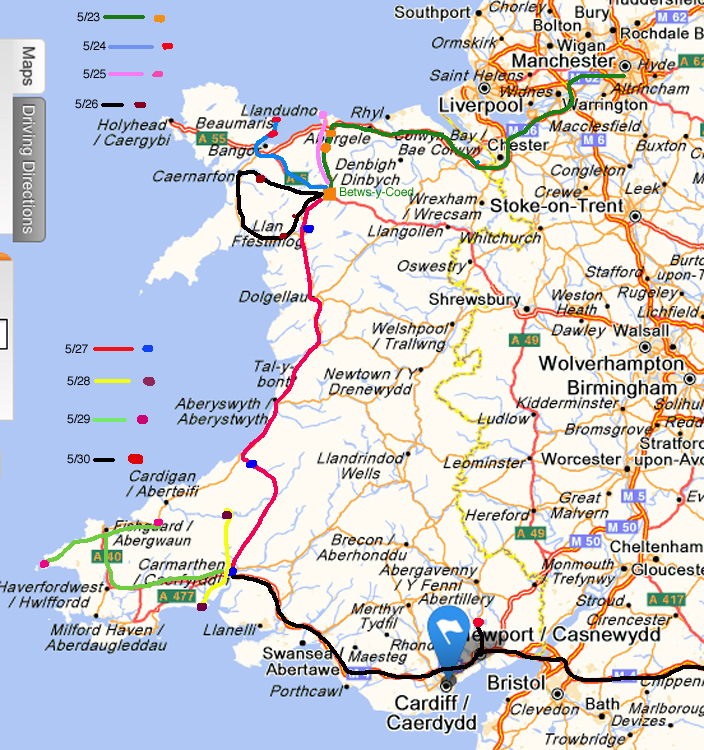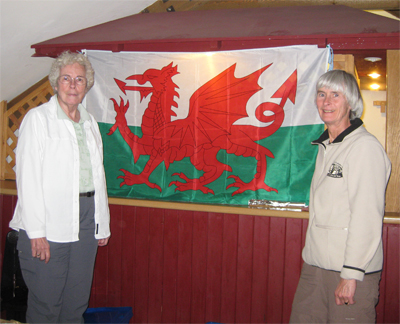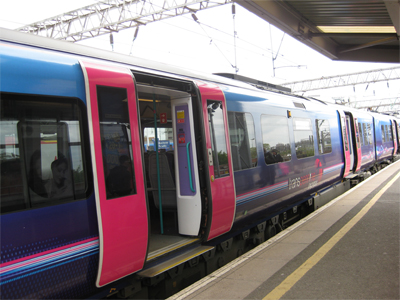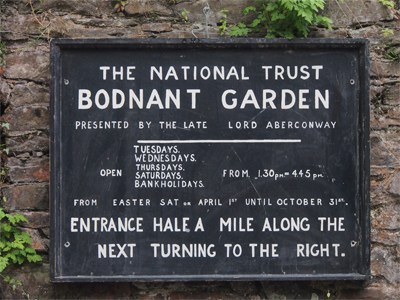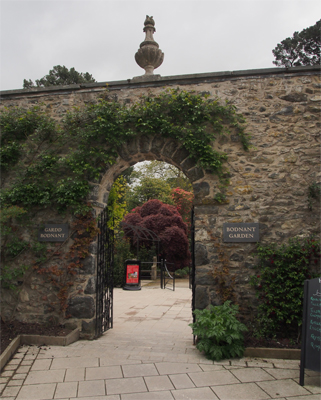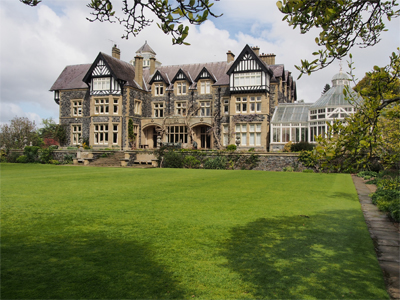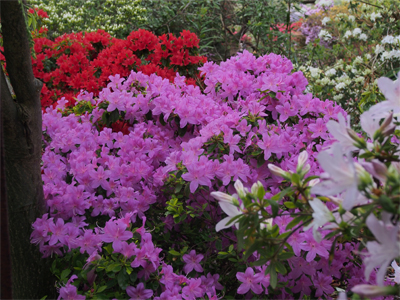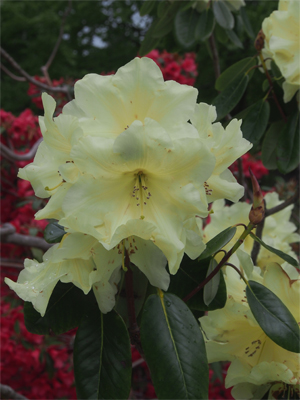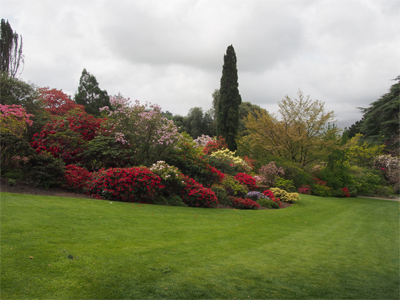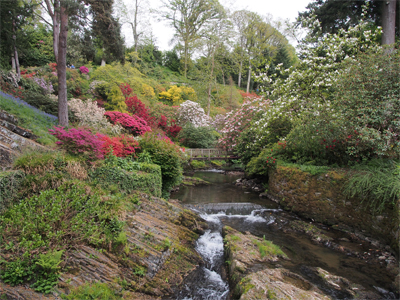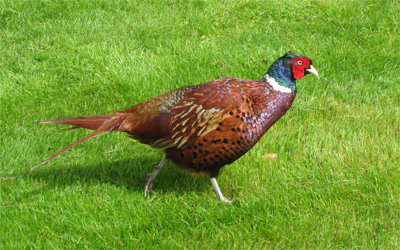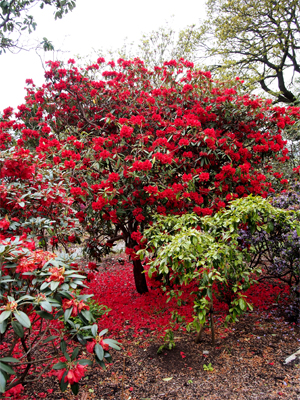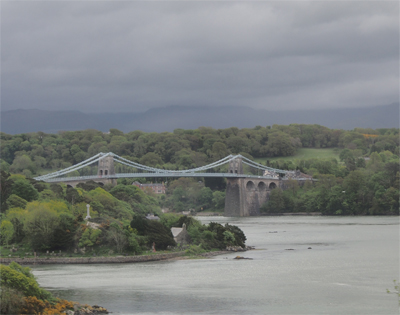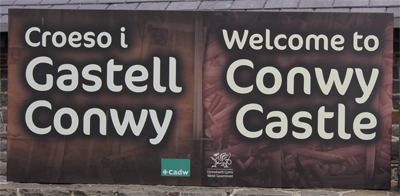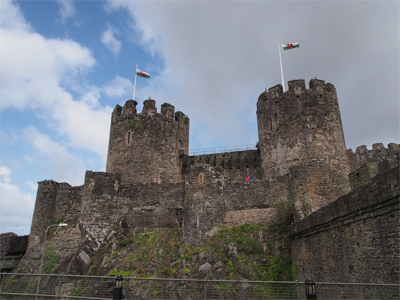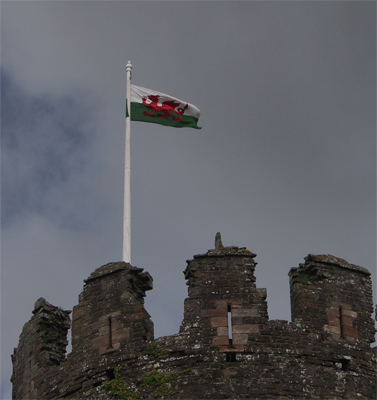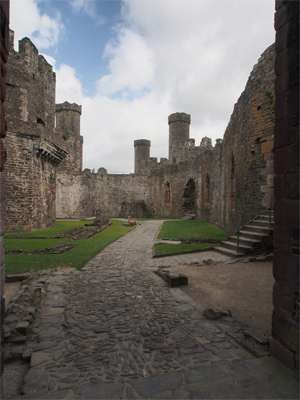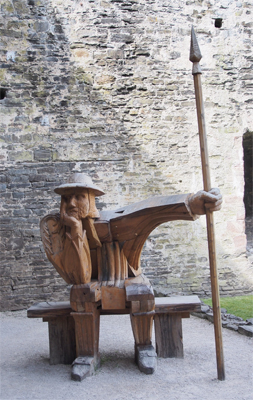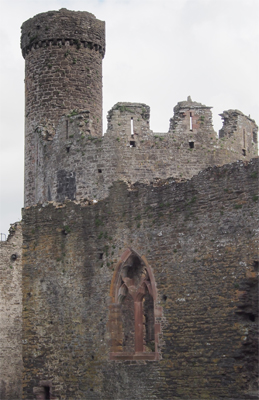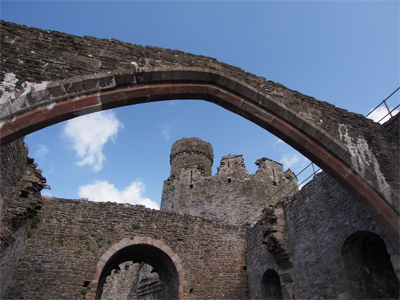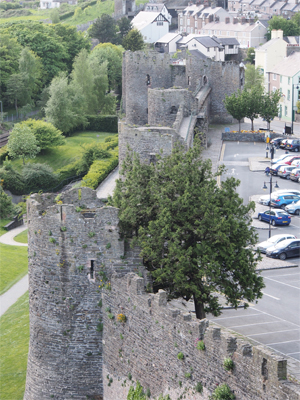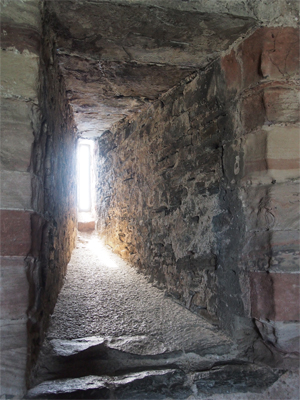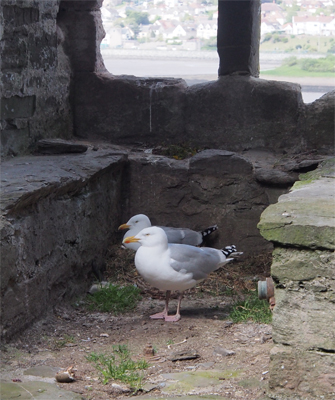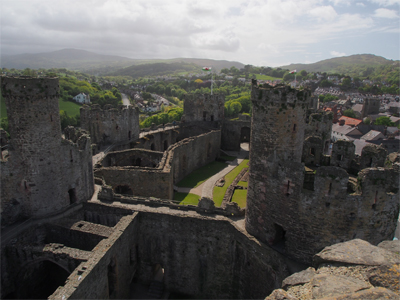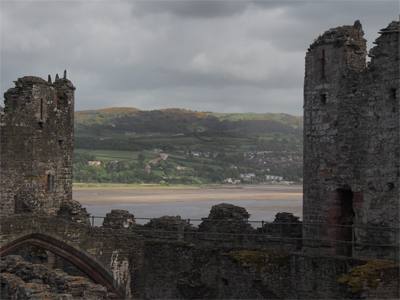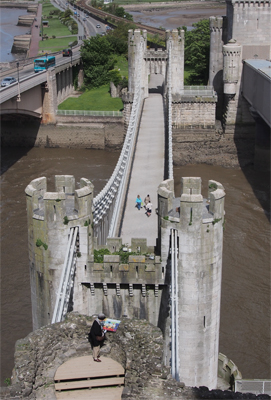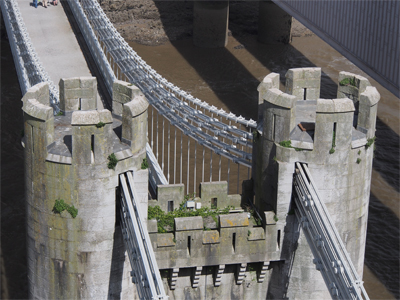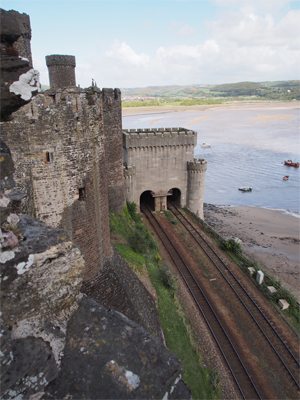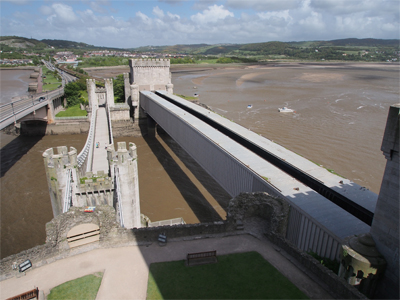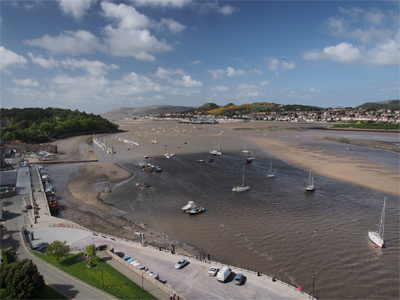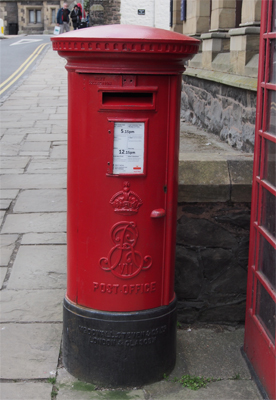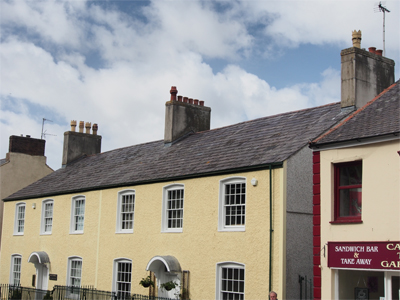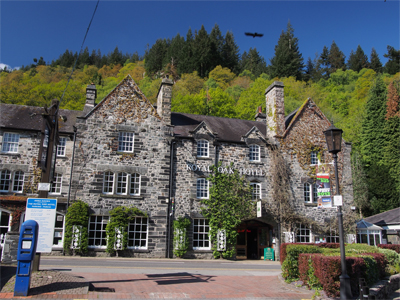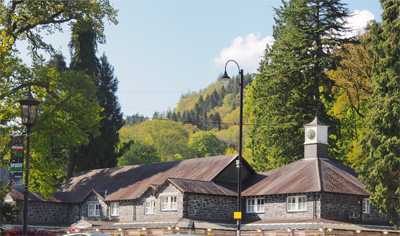May 22 -- 31, 2013
Since Marge's paternal great grandparents emigrated from Wales in the 1850s (probably), she has always had an interest in visiting that country. This particular Road Scholar tour is the only one that spends a significant amount of time in Wales, the Land of Song, and that is why we chose it.
| Trip Map | |
| 5/22 | Edinburgh to Manchester, England |
| 5/23 | Bodnant Gardens; Conwy Castle |
| 5/24 | Anglesey: Penmon Abbey; Beaumaris Village |
| 5/25 | Betws-y-Coed: St. Michael's Church; Great Orme Copper Mine |
| 5/26 | Blaenau Ffestiniog Railway; Welsh National Slate Museum |
| 5/27 | Portmerion Gardens; Llanerechaeron |
| 5/28 | Carmarthen; National Wool Museum; Laugharne: Dylan Thomas' home |
| 5/29 | Castell Henllys; St. Brynach's Church; St. David's |
| 5/30 | Southern Wales; Caerleon |
| 5/31 | Fly home from London |
Map of Wales showing the daily trips we took - colored dots (blobs) represent the places we visited each day
Here we are in front of the flag of Wales
EU and non-EU license plates for Wales - the Welsh word for Wales is Cymru, pronounced "Cumree")
Wed., 5/22 - Edinburgh, Scotland to Manchester, England
We took a taxi to the Waverley train station and got on our train to Manchester, England. The train left at exactly 9:51, as scheduled, and was a quite nice train.
We crossed Hadrian's Wall and entered England. We arrived on time in Manchester. By 2:30 PM a taxi delivered us to the Holiday Inn West. After checking in with our new tour leader, we rested until our 5 PM orientation meeting.
Thurs., 5/23/13 - Manchester to Betws-y-Coed
We boarded our new Mercedes Benz motor coach to begin our tour in Wales and drove off in the rain (what else?) to visit the Bodnant Gardens in Wales. Conway Davies, our tour guide and lecturer, joined us at the gardens. The mansion at the Gardens has terraced formal lawns, gardens, and huge old trees. Plants from all over the world are planted here, but the rhododendrons and azaleas were in bloom and were gorgeous. They were every shade and color imaginable including bright yellow rhodies. We walked around admiring the colors and ignored the intermittent showers. The famous Laburnum Arch made of pruned trees with yellow flowers was not in bloom.
We ate at the Gardens and were served a salad and Welsh rarebit at the tea-house.
Entrance to Bodnant Garden
Bodnant House
Azaleas
Yellow Rhododendron
Resident Ringneck
Red Rhododendron
On our way to Conwy Castle we crossed over the Menai Straits on the Conwy Suspension Bridge built by Thomas Telford in 1829. It was the first modern suspension bridge in the world.
The castle and the walled city date to 1283 and were constructed for King Edward I, Longshanks, who in 1301 made his son the first Prince of Wales, a title held ever since by the eldest son of the English monarch.
We walked all around the castle and towers and ramparts, looked into the dungeon, walked through where the great hall was (no ceiling or roof remain), the small chapel and some of the quarters. What a place for tag or hide-n-seek! All the tower stairs were circular and the shooting slots were short for crossbows and tall for longbow use.
Menai Suspension Bridge
Castle Conwy Ramparts
Flag of Wales flying over the ramparts
Conwy Castle Courtyard
A guard?
Sandstone facing on window for decoration
Arch and tower
Town walls below Conwy Castle
Thick walls, narrow shooting slits for defense
Happy home
Looking out at the Welsh countryside
Looking out at the Welsh countryside
Two famous bridges span the River Conwy at the Castle. One is Thomas Telford's Suspension Bridge, completed in 1826. It was built as a road bridge with towers to match those of the Castle, it is now a footbridge.
The second bridge is Robert Stephenson's tubular wrought iron Railway Bridge. Completed in 1848, this was the first tubular bridge to be built.
Thomas Telford's Suspension Bridge
Towers of Thomas Telford's Suspension Bridge
Robert Stephenson's Railway Bridge
Both bridges stand side-by-side
River Conwy with the tide going out
Post box
Chimneys, once coal burning, now converted
We drove to Betws-y-Coed (sounds more like Bet-oos-coid in the nearly impossible to pronounce language of Wales), checked into our hotel, the Royal Oaks where we will be based for four nights. On this tour we stay in the same hotel for several nights and make day excursions out to the sights. It does have its advantages - no packing and unpacking every day.
Royal Oaks Hotel
Royal Oaks Hotel
